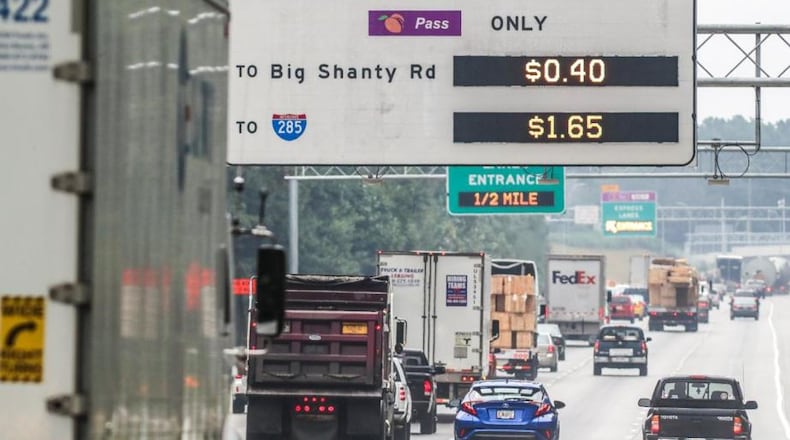Motorists took more than seven million trips on the Northwest Corridor during their first year of operation, the Georgia Department of Transportation said Monday.
The lanes – which opened on Sept. 8, 2018 – stretch nearly 30 miles along I-75 and I-575 in Cobb and Cherokee counties. They are reversible – carrying traffic into Atlanta in the morning and out of town in the afternoon.
The lanes are open to motorists willing to pay at least 10 cents a mile (the cost rises as traffic gets worse, but there's a flat 50-cent fee overnight). They've been a hit with many commuters, and the latest statistics from GDOT show they've have made an impact on traffic.
The agency says motorists in the toll lanes are traveling about 30 percent faster than those in the free (or “general purpose”) lanes. But motorists in the free lanes have also benefited – they’re moving about 20 mph faster at rush hour than before the toll lanes opened.
As a result, rush hour has been reduced by more than an hour on the corridor in the morning and the afternoon, GDOT says.
The lanes surpassed seven million trips on their 347th day of operation. That’s almost one trip for every metro Atlanta resident.
The lanes have won several awards, and they're up for the People's Choice Award in the America's Transportation Awards (GDOT hopes you'll vote for the lanes here).
The Northwest Corridor is part of a growing network of express lanes that will eventually stretch 120 miles across metro Atlanta. They're a big part of GDOT's plans to address traffic congestion in the region.
Though the lanes have made a difference, traffic is still likely to get worse as the region adds hundreds of thousands of residents in coming years. You can read more about the lanes and their impact here.
About the Author
The Latest
Featured


